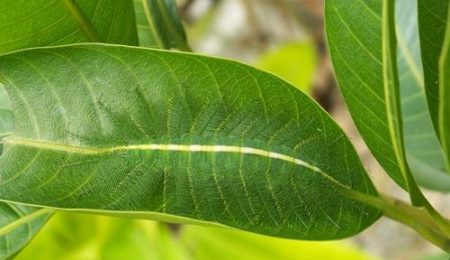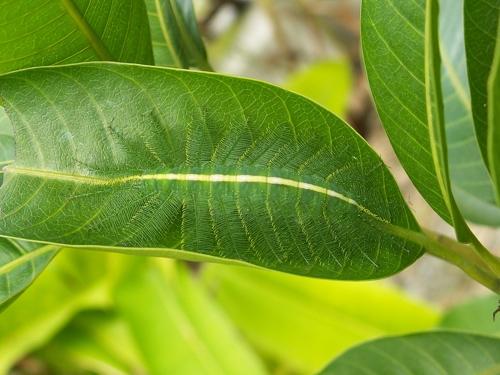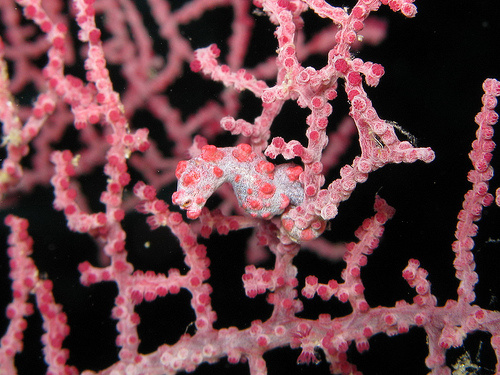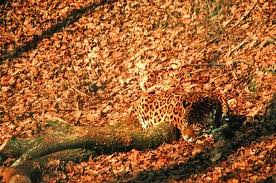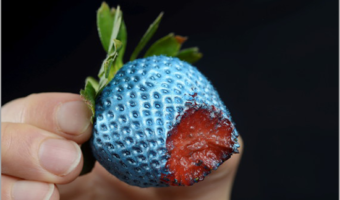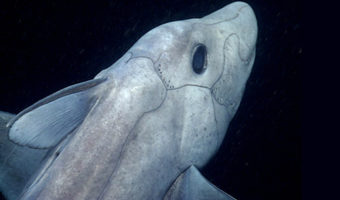“Camouflage is a set of methods of concealment that allows otherwise visible animals, soldiers, military vehicles, or other objects to remain unnoticed by blending with their environment or by resembling something else.â€
Well, survival is a challenging task not only for us humans but the animals too. Maybe that is the reason why they are well endowed with the art of Camouflage. The animals use this art for catching their prey and protecting themselves from their enemies. Today’s article focuses on such camouflaged animals that blend with their surroundings so well that it is next to impossible to distinguish them from their surroundings.
Here Are Some Of The Animals That Use This Amazing Technique Called “CAMOUFLAGEâ€Â
(Note: Click on images for a better view)
1Common Baron CaterpillarÂ
The Common Baron caterpillar feeds on mango trees and cashew nuts during its larvae stage, using remarkable camouflage to hide from predators by seemingly disappearing into foliage. Once metamorphosed it transforms into a light brown butterfly.It is a medium-sized nymphalid butterfly which is a native to India and Southeast Asia.(source)
2 Uroplatus phantasticus
Uroplatus phantasticus, also known as the Satanic Leaf Tailed Gecko is a species of gecko which is only found in Madagascar. It is an arboreal species that relies on its natural camouflage in the northern and central tropical forests of Madagascar.Other names for it are the eyelash leaf tailed gecko or the fantastic leaf tailed gecko.This creature is a master of disguise and you might have a hard time to distinguish this creature from the leaves since all 9 cm of the gecko literally looks exactly like a leaf, right down to the grungy, dead leaf tail.(wiki)Â
3 Phasmatodea
The Phasmatodea are an order of insects, whose members are variously known as stick insects (in Europe and Australia), walking sticks or stick-bugs (in the United States and Canada). The ordinal name is derived from the Greek word phasma, meaning an apparition or phantom, and refers to the resemblance of many species to sticks or leaves. Their natural camouflage can make them extremely difficult to spot. Phasmatodea can be found all over the world in warmer zones, especially the tropics and subtropics. The greatest diversity is found in Southeast Asia and South America, followed by Australia. Phasmids also have a considerable presence in the continental United States, mainly in the Southeast.(wiki) 4. Pygmy Seahorse
A tiny, brightly colored marine animal is an expert camouflage artist and, as the tiniest cousin of the seahorse, is known as the ‘pygmy seahorse’. It takes its name from the fact that it is so tiny, and has often been overlooked by researchers and biologists. Measuring less than an inch in length, it is the smallest seahorse in the world.(source) 5 Cuttlefish
Cuttlefish are sometimes referred to as the “chameleons of the sea” because of their remarkable ability to rapidly alter their skin colour at will. Cuttlefish change colour and pattern to communicate to other cuttlefish, to camouflage themselves and in deimatic display to warn off potential predators.(wiki) Â
6Â Jaguar
The Jaguar (Panthera Oca) is a mysterious animal. Being the largest South American cat, it can live up to 16 years and most species are found in the zoos. The Jaguar lives in the understory, the last or bottom layer in the rain forest, which helps it camouflage with its beautiful fur. The Jaguar’s fur is yellowish- brown in color and coated with irregular black spots. Sometimes people confuse Jaguars with Panthers. They are related, but the Jaguar’s jaw is bigger and its head is heavier.(source) Â
7 Decorator  Crab
Decorator crabs are crabs of several different species, belonging to the super family Majoidea (not all of which are decorators), that use materials from their environment to hide from or warn off predators. They stick mostly sedentary animals and plants to their bodies as camouflage or, if the attached organisms are noxious, to warn off predators through aposematism.(wiki) 8Â Tiger Sharks
These sharks have dark blue or gray backs that blend in with the dark waters near the ocean floor. They also have white or light-yellow bellies that match the light waters near the ocean’s surface. This camouflage makes it hard for other animals to see the sharks, whether they are swimming above or below them. Plus, tiger sharks have stripes on their backs that look like shadows of waves in the water, helping to disguise them even more.(source) 9 Arctic Fox
Scientifically known as the Alopex lagopus, the Arctic fox is also known as the White Fox. Arctic Foxes are found in the Northern hemisphere and mostly live in areas of Northern Canada, Alaska and around the Arctic Circle in the tundra and some coastal areas. The Arctic fox weighs around 2.5 to 9 kg and has a length that measures about 75 to 115 cms. This white fox has been given the name due to its white coat which serves as a camouflage. Once the spring or the summer sets in, this white coat tends to become slightly thinner and the legs along with the back and the tail tend to become slightly brown. Some Arctic foxes even have a bluish coat during the winter season which becomes darker during the summer days.(source) 10Â Eastern Screech Owl
The screech owls are about 7 to 10 inches tall and have a wingspan of about 18 to 24 inches. They have either rusty or dark gray intricately patterned plumage with streaking on the underparts. Mid-sized by screech-owl standards, these birds are stocky, short-tailed and broad-winged. They have a large round head with prominent ear tufts, yellow eyes and a yellowish bill. Rusty birds are more common in the southern parts of the range; pairings of the two color variants do occur. A pale gray variation also exists in western Canada and the north-central United States. This coloration helps them get camouflage against the tree bark.(wiki) 